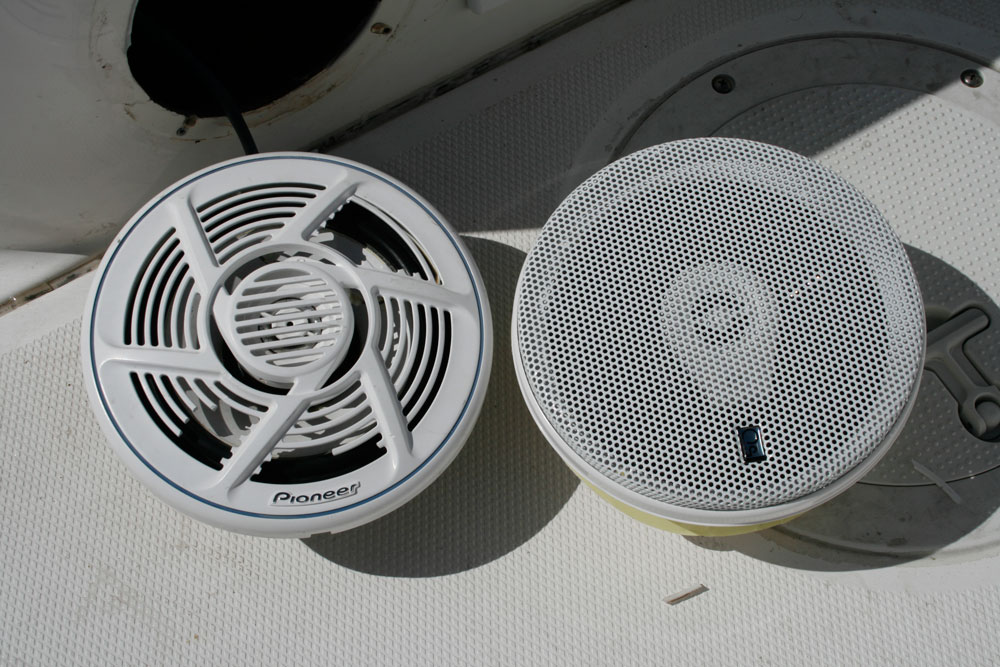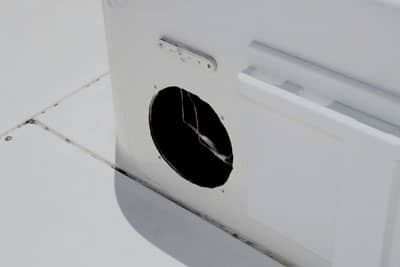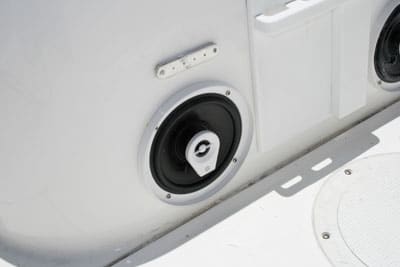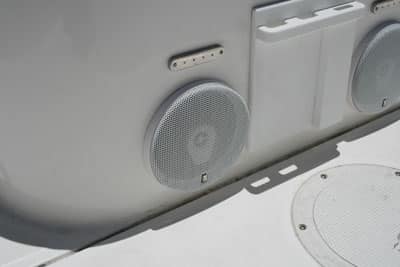
Kick-Proof Speakers
If you’re thinking about installing stereo speakers on your boat, I have a warning: Don’t put them where a crewmember can put a foot or knee through the grill and possibly the speaker cone itself.
If, for example, you think mounting speakers high on the gunwale of a fishing boat is a safe location, think again. We installed a pair on my son’s boat fairly high on the gunwale opposite the center console, but a guest fighting a big fish down the rail managed to shatter the plastic speaker grill with his knee.
Lest I blame only others for breaking stuff, I also managed to put a foot through a speaker grill recently while fishing with my buddy Rob Webster aboard his Boston Whaler 190 Montauk. In this case, the speakers were mounted in the bulkhead just forward of the built-in live well, right at foot level. I felt awful, but Webster assuaged my guilt by contending that his rigger chose a poor location for the speakers. Indeed.
So the location was bad, but the big cutouts for the speakers were already there. With this in mind, we decided to look for speakers with stronger grills, and found the Poly-Planar MA-8506 6″ Titanium Series marine speakers ($99.95/pair, thegpsstore.com) with stainless steel grills that might bend, but are tough to break. The 200-watt three-way speakers have an ultra-low magnetic field, so they won’t interfere with your compass or other navigational equipment. They’re also waterproof, which is important with speakers mounted just a few inches above the cockpit sole. We chose the powder-coated white grills to match the Whaler’s interior.

This seemed like a simple retrofit, but few projects are easy on boat. Sure enough, the new Poly-Planar speakers required a slightly bigger cutout than the old Pioneer speakers. So out came the Dremel grinding wheel, and about an hour later, covered in fiberglass dust, we were ready to wire up and install the new speakers.
We cut the wires to the old speakers, and spliced in portions of the supplied wires that come with the insulated, properly sized spade connectors – the larger for positive and smaller for negative – sealing our crimped butt connectors with heat-shrink tubing.

Poly-Planars come with an adhesive gasket to help seal out water, but we also beaded around the speakers and the screw holes with silicone marine sealant. We got lucky on the screw holes, as they matched the hole pattern of the old speakers. Final step was to snap on the stainless steel grills and do a sound check.

Poly-Planar’s Titanium speakers with powder-coated stainless steel grills sound and look great on the 190 Montauk. While only time will tell, these speaker grills should be a lot more kick proof that the old plastic ones.
For more on how to set up a stereo system on your boat, check out our Marine Stereo System Tips.









